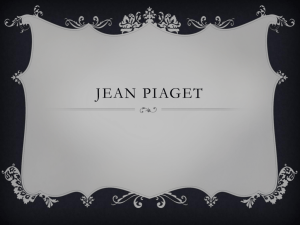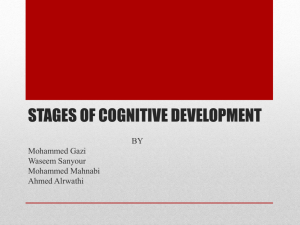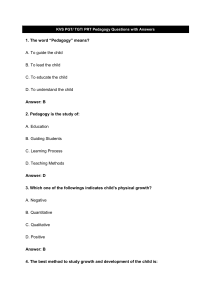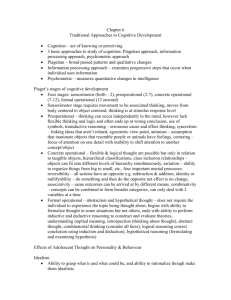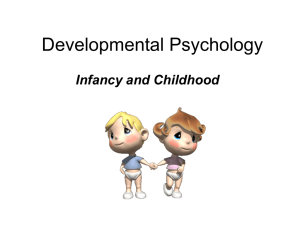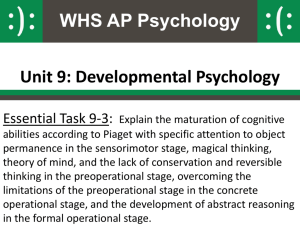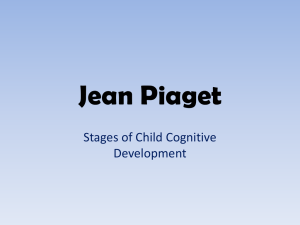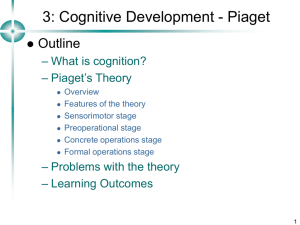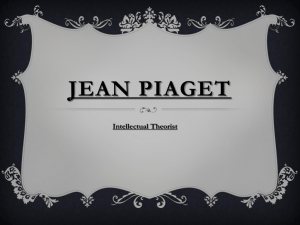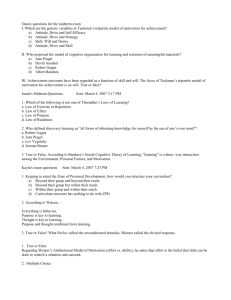Two Piaget Developmental Stages 1 Running head: Two of Piaget`s
advertisement
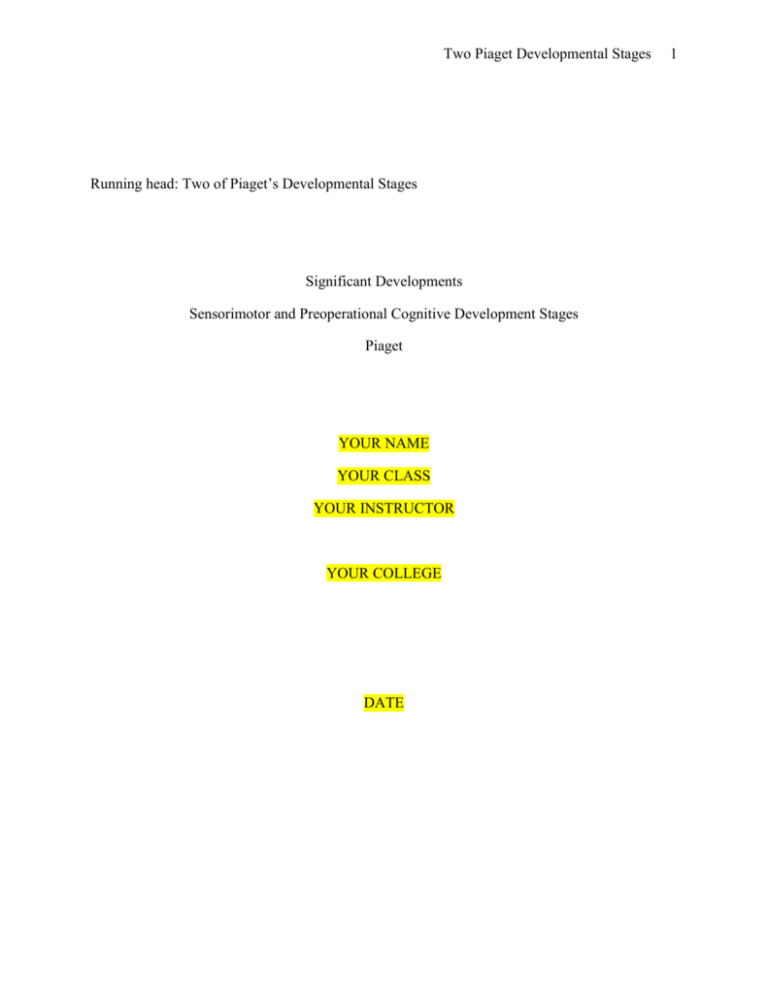
Two Piaget Developmental Stages Running head: Two of Piaget’s Developmental Stages Significant Developments Sensorimotor and Preoperational Cognitive Development Stages Piaget YOUR NAME YOUR CLASS YOUR INSTRUCTOR YOUR COLLEGE DATE 1 Two Piaget Developmental Stages 2 Sensorimotor and Preoperational Stages Stage of Development Substage (Piaget’s Description) Appropriate Age Range Additional Description Example 1. Simple Reflexes Birth to 1 month (A child sucks at the breast of the mother. This is a purely inborn reflex). 2. First Habits and Primary Circular Reactions 1 – 4 months Modification of reflexes in order to naturally make them more adaptive as the infant tries to make sense of the world Child coordinates actions to repeat a sensation. 3. Secondary Circular Reactions 4 – 8 months Sensorimotor (0 to 1 years) 4. Coordination of secondary circular reactions 5. Tertiary circular reactions, novelty, and curiosity 6. Internalization of schemes The child intentionally uses an object outside their own body to initiate and experience sensory reaction. 8 – 12 months Child possibly combines more than one action to bring about remembered experience. 12 – 18 months This is a stage of experimentation; trial and error 18 – 24 months Beginning true mental representations. (A child may suck their thumb by accident and then, at a later time, the child may intentionally sucks his/her thumb, having found sensory pleasure in the action.) (While still seeking sensory awareness, the child may actively seek a toy to put in their mouth. This is a repetitious action which they know will give them a sensory pleasure.) (Child recognizes the sensory results of shaking a rattle and intentionally shakes the rattle to obtain the desired noise.) (Experimentation with different sounds will help a child to meet their basic needs, such as getting the attention of a parent through a high pitched scream.) (A baby may change the heights from which they drop items. This is the basic Two Piaget Developmental Stages 3 Deferred imitation beginnings of understanding through cognitive recognition rather than through actions alone.) Preoperational (2 – 7 years) 1. Preconceptual 4 to 7 years Good language and mental imagery skills are developing. The child focuses on single perceptual dimensions while observing. (If a child is shown three different views of an object and then asked what another person might see at different angles, the child chooses their own perspective rather than what the other person might actually be seeing.) 2. Intuitive thought 2 to 4 years There is development of symbolic capacities. Children exhibit a growth of language and mental imagery. They are egocentric in their communication. (Children use symbols as they develop pretend games. For example, they may use a broom to represent a horse. Children like to imitate persons such as mommy or daddy while role playing.) References General information and guidance was obtained from the following sources 1. Cherry, Kendra, Preoperational Stage of Cognitive Development (n.d.). Retrieved October 2012 from http://psychology.about.com/od/piagetstheory/p/preoperational.htm 2. Cherry, Kendra, Sensorimotor Stage of Cognitive Development, (n.d.). Retrieved October 2012 from http://psychology.about.com/od/piagetstheory/p/sensorimotor.htm 3. Piaget’s Substages of Sensorimotor Development, (n.d.). Retrieved October 2012 from http://www.angelfire.com/magic/piaget/ 4. Santrock, John, Life-Span Development (1995), pages 209-212. Wm. C. Brown Communications, Inc., Dubuque, IA 52001
